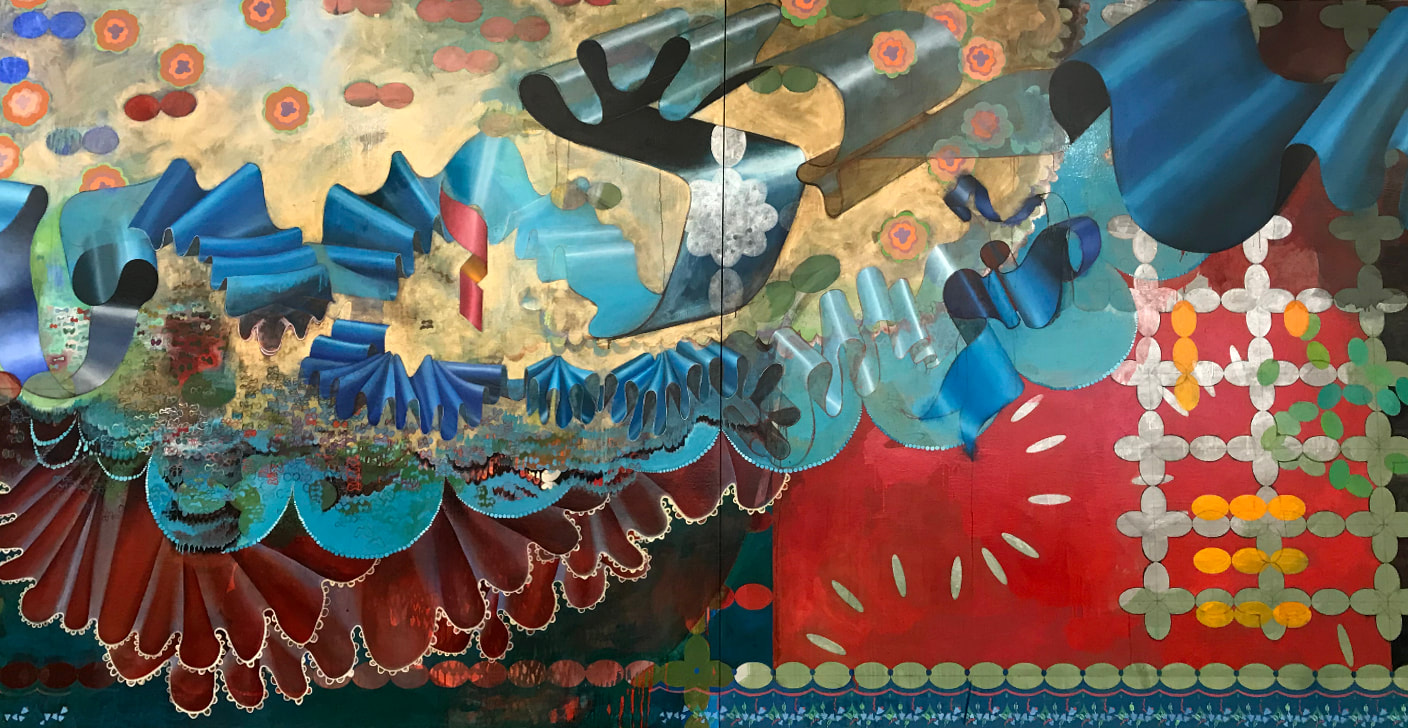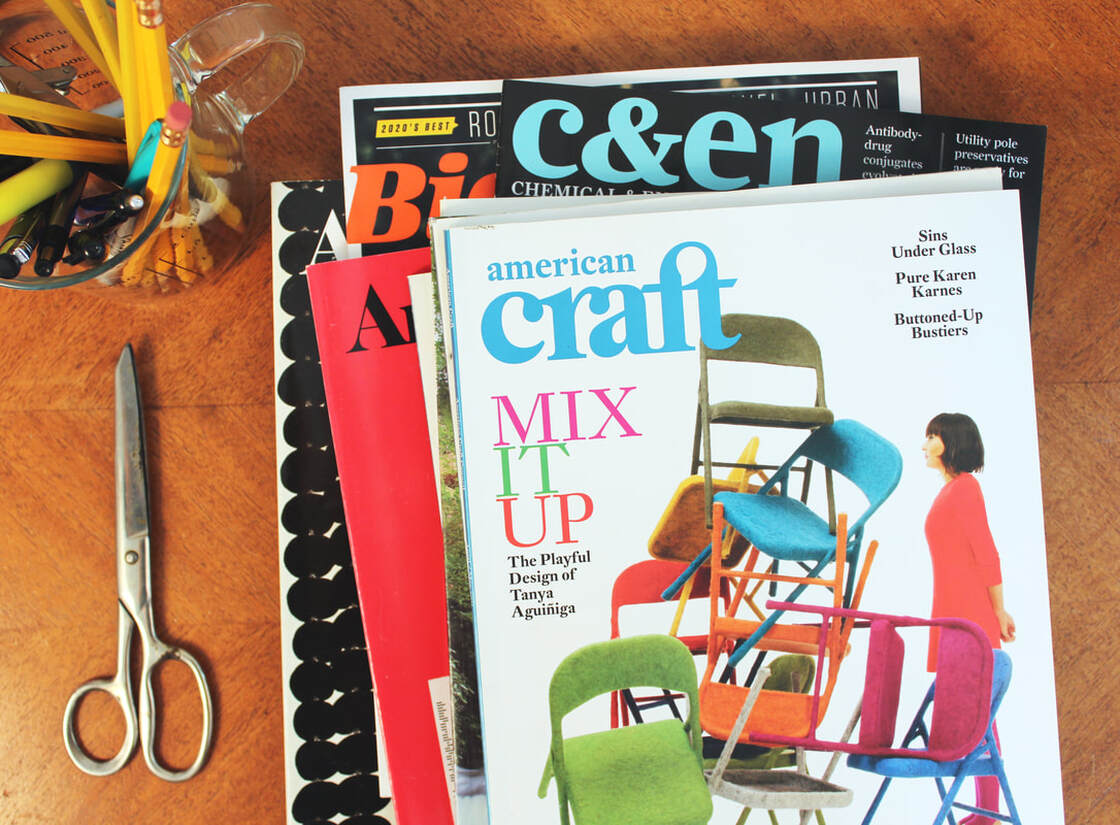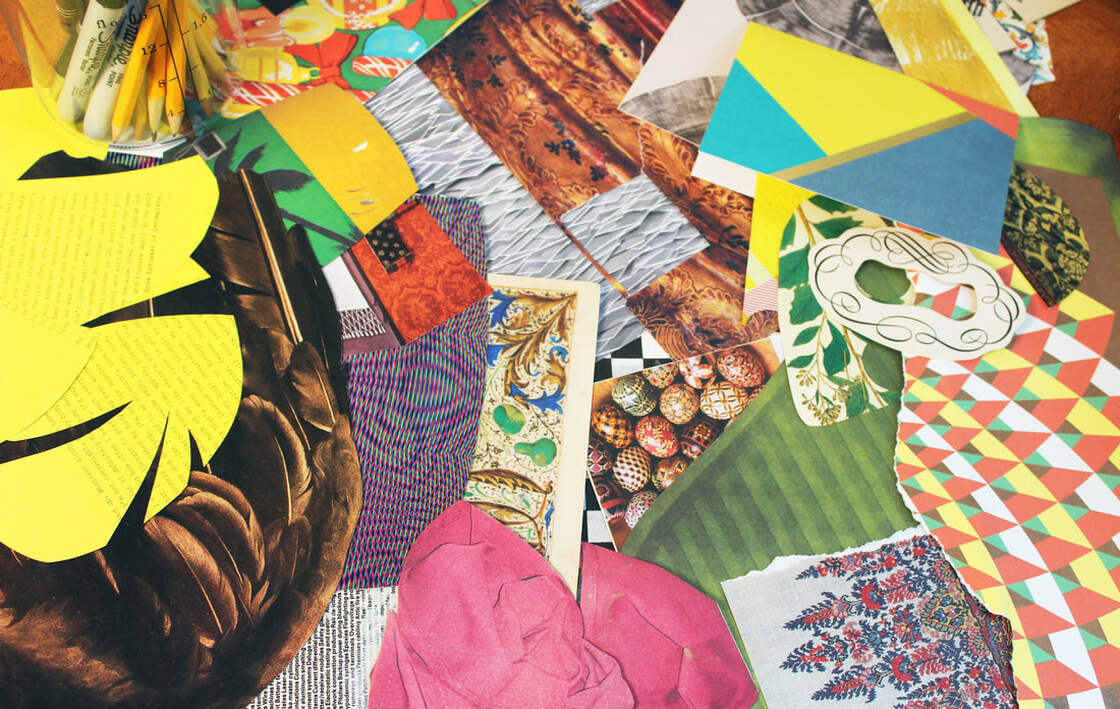Layered Visions |
|
Anne Lopez
Six Hundred and Five Ovals (Fancy Pants), 1998 Acrylic on canvas Saint Vincent College Collection The accumulation in the paintings is not about filing the space, but about elevating the everyday to the special, finessing the composition, about the experience of making and the need to make, as well as the experience of losing oneself in the complexity. – Anne Lopez |
Anne Lopez explores the varied ways we adorn our homes and bodies in order to express individuality. Six Hundred and Five Ovals (Fancy Pants) depicts fluttering ribbons, fields of vibrant color and geometric patterning reminiscent of a mosque that converge in a dizzying spectacle. Lopez notes that artists throughout the world – often women – have long employed pattern and ornamentation to elevate the everyday elements of life. Whether woven, painted, embroidered, printed, or assembled, many of these motifs symbolize overarching values, aspirations, and beliefs.
Lopez’s work revisits the ideas and techniques developed by artists associated with the Pattern and Decoration movement beginning in the mid-1970s. These artists rejected Minimalism and Conceptualism – the preeminent styles of the day – as too aloof, sterile, and esoteric. In contrast, their work was energetic, colorful, busy, and at times garish; featuring compositions that layered dense decorative elements lifted from diverse cultures and time periods. Pattern and Decoration artists challenged audiences to reconsider the materials and methods of crafting (dismissed frequently as ‘women’s work’) as possessing the same beauty and importance as their fine art counterparts. |
Anne Lopez, Six Hundred and Five Ovals (Fancy Pants) detail, 1998
Start by gathering your materials: a sheet of paper, scissors, glue, a pencil, and discarded ephemera such as old magazines, newspapers, wrapping paper, ribbon, maps, greeting cards, books, and advertisements.
Look for patterns, swatches of color, and pieces of decoration. These could be human-made designs like wallpaper, tablecloths, rugs, and board game designs or images of organic textures like fish scales, bird feathers, and ivy leaves.
Once you’ve located a sizable amount of material, cut, tear, or fold your elements and begin arranging them on your larger sheet of paper. Keep moving the pieces around to create unexpected combinations between your patterns. Try tracing around a template and cutting out the same shape to create a consistent design sequence otherwise known as a motif.
Once you’ve arrived at a satisfying composition, glue the elements of your collage down. You may decide to introduce paint or drawing media into your piece.
Interested in going bigger? Using a bulletin board and pins or non-abrasive tape on a wall, see how large you can expand your collage to create an installation.
Interested in going bigger? Using a bulletin board and pins or non-abrasive tape on a wall, see how large you can expand your collage to create an installation.
Studio Research / Check out The Museum of Contemporary Art's recent exhibition, With Pleasure: Pattern and Decoration in American Art 1972–1985 to see work by pioneers of the Pattern and Decoration movement.






